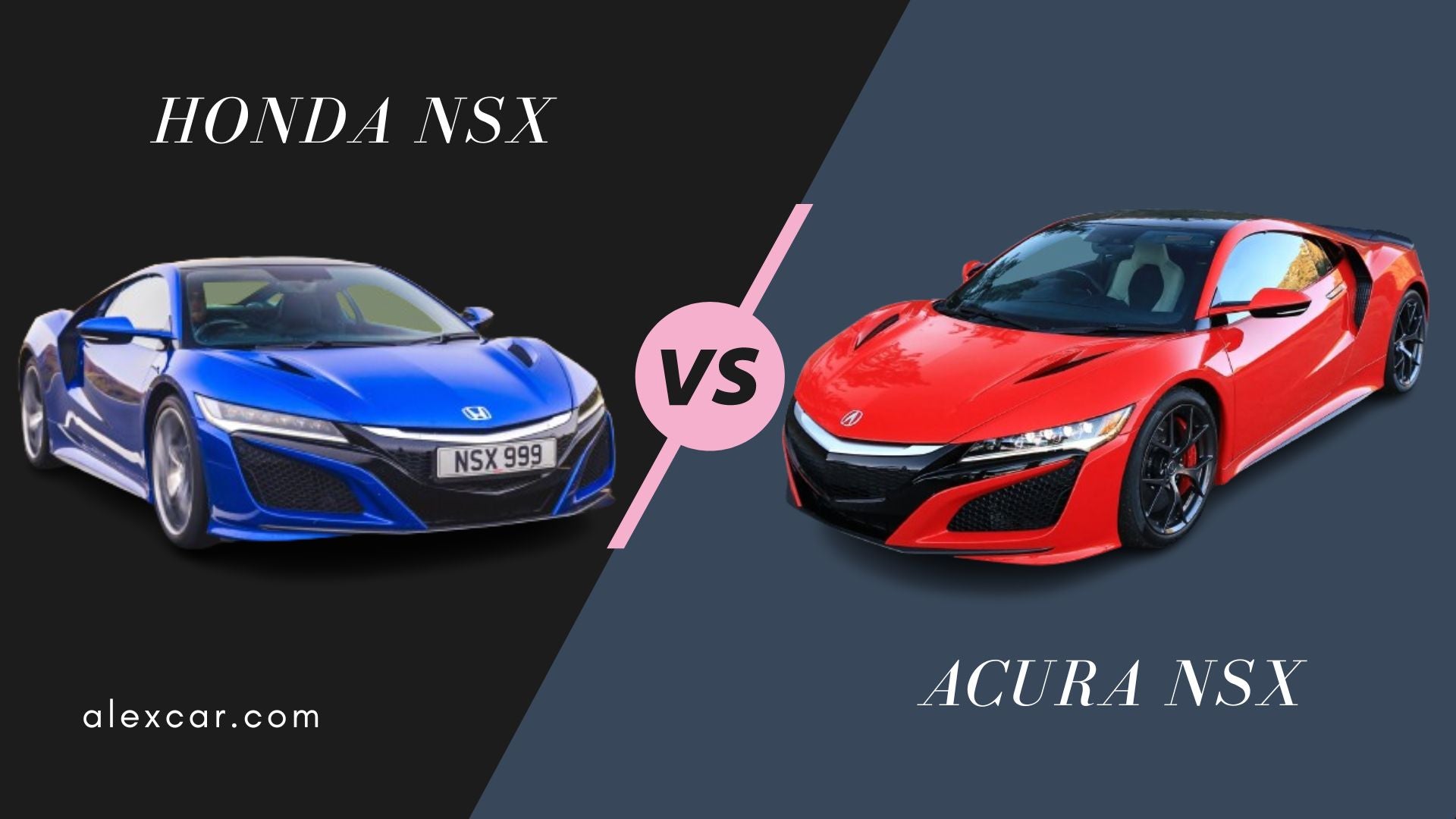Are you in the market for a new crossover SUV? Two popular choices often compared are the Acura RDX and the Honda CR-V. Both vehicles offer practicality, reliability, and modern features. But which one best fits your needs and budget? In this comprehensive comparison, we'll dive into the key differences between the Acura RDX and Honda CR-V to help you make an informed decision.
As an automotive expert with over a decade of experience comparing and reviewing vehicles, I have the knowledge to guide you through this important decision. My goal is to provide trustworthy, authoritative information to help you choose the right SUV for your specific situation. Let's start by looking at pricing and value.
Pricing and Value
One of the first things most buyers consider is the price tag. Here's how the Acura RDX and Honda CR-V compare:
| Model | Base MSRP | Top Trim MSRP |
|---|---|---|
| Acura RDX | $40,600 | $52,700 |
| Honda CR-V | $26,800 | $38,600 |
As you can see, the RDX has a significantly higher starting price, positioning it as a more premium offering. However, the top-end CR-V Touring still comes in several thousand less than a base RDX.
So what do you get for the extra money with the Acura? Quite a bit, actually. Even the base RDX includes features like:
- Leather-trimmed sport seats
- Heated front seats
- 10.2-inch HD display
- 12-speaker premium audio
- Panoramic Moonroof
- Wireless charging pad
To get an equivalently-equipped CR-V, you'd have to step up to the top-tier Touring trim, and even then some features won't match the Acura. However, the CR-V does offer excellent value, with standard Honda Sensing safety tech and good interior materials even on lower trims.
Verdict: The RDX justifies its higher price for buyers who want premium amenities and a more luxurious experience. The CR-V is the value leader for those on a tighter budget.Performance and Driving Experience
Another area where the Acura RDX and Honda CR-V diverge is when you get behind the wheel. Let's see how their powertrains stack up:
| Model | Engine | Horsepower | Torque | Transmission |
|---|---|---|---|---|
| Acura RDX | 2.0L Turbo I-4 | 272 hp | 280 lb-ft | 10-speed auto |
| Honda CR-V | 1.5L Turbo I-4 | 190 hp | 179 lb-ft | CVT |
The RDX's 2.0-liter turbo engine provides a serious boost in output compared to the CR-V's 1.5-liter turbo. You can feel the difference in acceleration, with the Acura sprinting from 0-60 mph nearly 2 seconds quicker. It also benefits from a conventional 10-speed automatic transmission vs the CR-V's CVT.
In terms of handling, the RDX also has the edge thanks to its torque-vectoring Super-Handling All-Wheel Drive (SH-AWD) system. It provides rear-wheel bias and can send up to 70% of torque to the rear axle, making the SUV feel more agile and balanced in corners. The CR-V's AWD is capable but tuned more for all-weather traction.
Ride quality is another RDX strength, with standard amplitude reactive dampers that provide excellent compliance over rough pavement. The CR-V's suspension is also comfortable but doesn't quite match the Acura's refinement.
Verdict: With nearly 80 more horsepower and a much more advanced AWD system, the RDX is easily the athlete between these two. The CR-V is competent but geared more toward comfort than excitement.
Interior and Cargo Space
Crossover SUV buyers rank interior space and practicality high on their priority list. Here's how the Acura RDX vs Honda CR-V match up in terms of cabin and cargo dimensions:
| Model | Passenger Volume (cu ft) | Cargo Volume (cu ft) |
|---|---|---|
| Acura RDX | 104 | 29.5 / 58.9 |
| Honda CR-V | 105.9 | 39.2 / 75.8 |
Despite being the smaller vehicle overall, the CR-V has an edge when it comes to interior spaciousness. It offers nearly two extra cubic feet for passengers and a significant advantage in cargo capacity, with nearly 10 additional cubic feet behind the rear seats and over 16 more with the seats folded.
The RDX does gain some points back with its classier cabin materials though, with things like contrast stitching, metal trim, and available open-pore wood that give it an upscale vibe. The CR-V's interior is more functional than flashy, but material quality is still good for its class.
Both SUVs provide comfortable seating with plenty of adjustability up front. Rear passengers will likely prefer the CR-V thanks to its almost flat floor and ample headroom. The RDX's rear seats are spacious but the center floor hump cuts into foot space.
Verdict: Unless you need maximum cargo volume, the RDX's luxurious trimmings give it a slight edge over the roomier but more basic CR-V cabin. Try them both out to see which you prefer.
Technology and Safety Features
Today's vehicles are rolling computers, packed with infotainment tech and advanced driver assistance systems (ADAS). The Acura RDX and Honda CR-V offer a full suite of features but differ in the details.
On the infotainment front, the RDX comes standard with a 10.2-inch HD dual-content center display with Acura's True Touchpad Interface. It's not a touchscreen, instead relying on a trackpad controller on the console. This system has a learning curve and can be distracting to use while driving.
The CR-V keeps things simpler with a 7-inch touchscreen on all but the base LX trim. It's easier to operate than the Acura's system and includes physical knobs for common functions. Both vehicles offer Apple CarPlay and Android Auto smartphone integration.
For safety tech, the CR-V comes standard with the Honda Sensing suite which includes:
- Collision Mitigation Braking System
- Road Departure Mitigation System
- Adaptive Cruise Control
- Lane Keeping Assist System
The RDX offers a similar array of ADAS features through its AcuraWatch system. However, blind-spot monitoring and rear cross-traffic alert are not standard as they are on all CR-V trims. The Acura does pull ahead with an available head-up display and surround-view camera system.
Verdict: The CR-V has a more user-friendly infotainment system and better standard safety tech, which will appeal to most mainstream buyers. Technophiles may prefer the RDX's more advanced options.
Fuel Economy and Ownership Costs
With gas prices in constant flux, fuel efficiency is an important consideration for many SUV shoppers. The EPA rates the Acura RDX and Honda CR-V as follows:
| Model | City MPG | Highway MPG | Combined MPG |
|---|---|---|---|
| Acura RDX AWD | 21 | 27 | 23 |
| Honda CR-V AWD | 27 | 32 | 29 |
The CR-V beats the RDX by 6 mpg across the board, thanks to its smaller, less powerful engine and CVT transmission. This could add up to significant fuel savings over years of ownership, especially if you do a lot of city driving.
From a long-term cost perspective, both Acura and Honda have strong reputations for reliability and affordable maintenance. However, RDX parts and service will generally be more expensive since it's a luxury vehicle. The CR-V's ubiquity and simpler design make it cheaper to own over time.
Resale value is another factor that favors the CR-V. It consistently ranks near the top of its class for retained value after five years. The RDX also performs well but luxury models tend to depreciate faster than mainstream ones like the CR-V.
Verdict: The CR-V is the clear choice for buyers focused on minimizing fuel and long-term ownership costs. The RDX is competitive but can't quite match the Honda's low operating expenses.
Final Thoughts
Having thoroughly examined the Acura RDX vs Honda CR-V matchup, which one is the better crossover SUV? As with most vehicle purchases, it depends on your priorities and budget.
The RDX is undeniably the more premium and performance-oriented of the two. It pampers occupants with high-end materials and technology, while thrilling drivers with turbocharged acceleration and agile handling. For buyers who won't settle for anything less than luxury, the RDX is worth the extra cost.
On the other side, the CR-V excels as a practical, efficient, and value-focused option. What it lacks in outright opulence it makes up for in everyday livability, with a huge cargo area, comfortable ride, and affordable operating costs. Buyers who just need a reliable family hauler will be well-served by the CR-V.
To summarize, here are the key points to consider when cross-shopping the Acura RDX and Honda CR-V:
- The RDX has a significantly higher starting price but comes with many more standard luxury features and performance upgrades
- The CR-V is cheaper to buy and operate, with better fuel economy and lower maintenance costs
- Driving enthusiasts will prefer the RDX for its powerful turbo engine and Super Handling All-Wheel Drive
- The CR-V has a roomier, more practical interior, especially in terms of cargo space
- Technology is a mixed bag, with the CR-V offering a simpler infotainment system and the RDX providing more advanced options
- Both vehicles have excellent safety ratings and driver assistance tech, though the CR-V includes more features as standard
- Long-term value favors the CR-V thanks to its slower depreciation and lower cost of ownership
Ultimately, the best way to pick between the Acura RDX and Honda CR-V is to test drive them back-to-back. Examine the interiors, play with the technology, and feel how they drive. Once you've experienced both vehicles in person, you'll be able to make an informed choice that fits your lifestyle and budget. Happy shopping!




Leave a comment
This site is protected by hCaptcha and the hCaptcha Privacy Policy and Terms of Service apply.